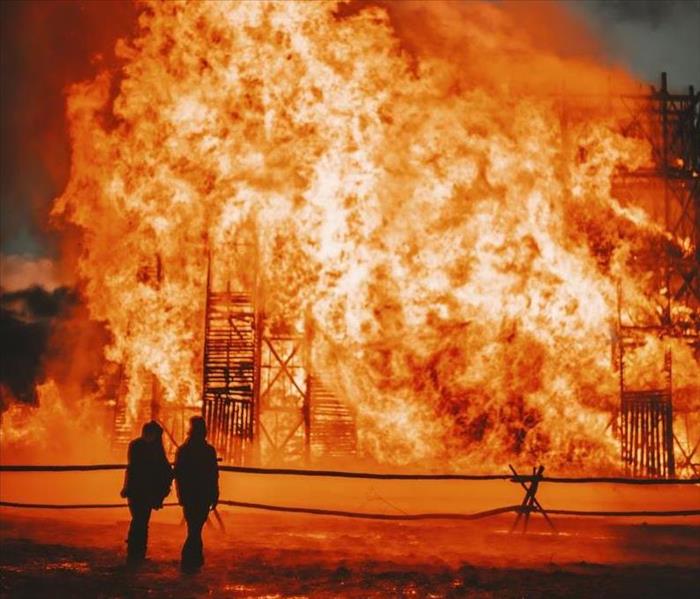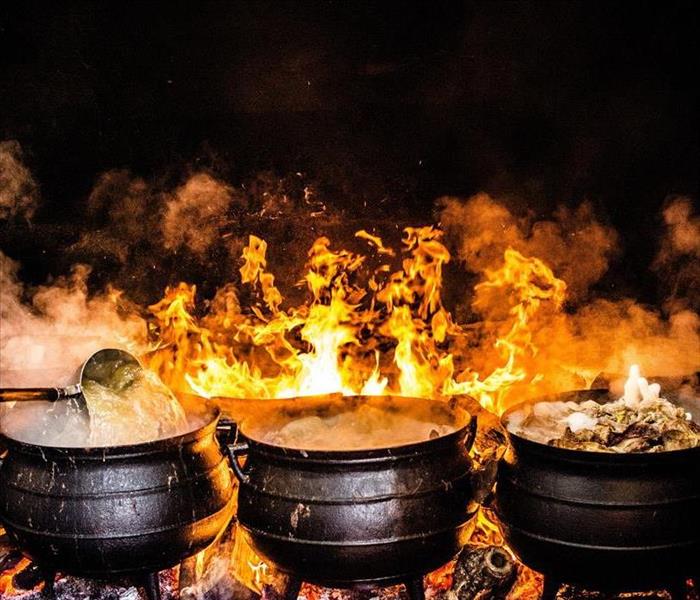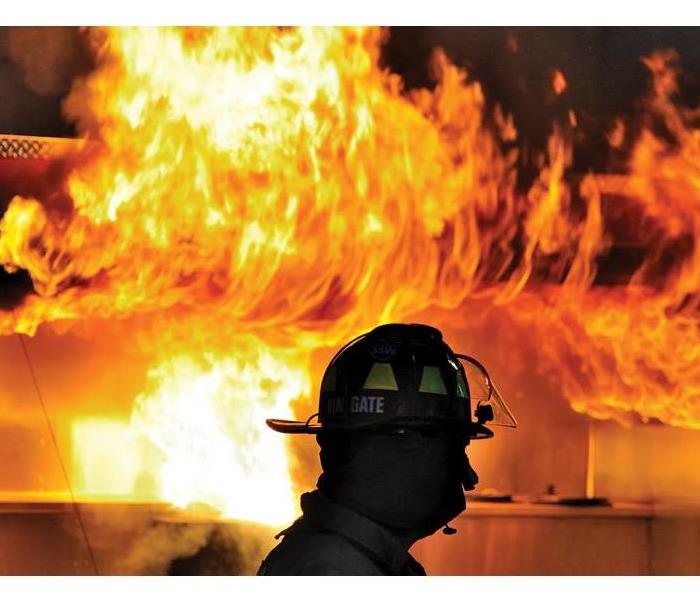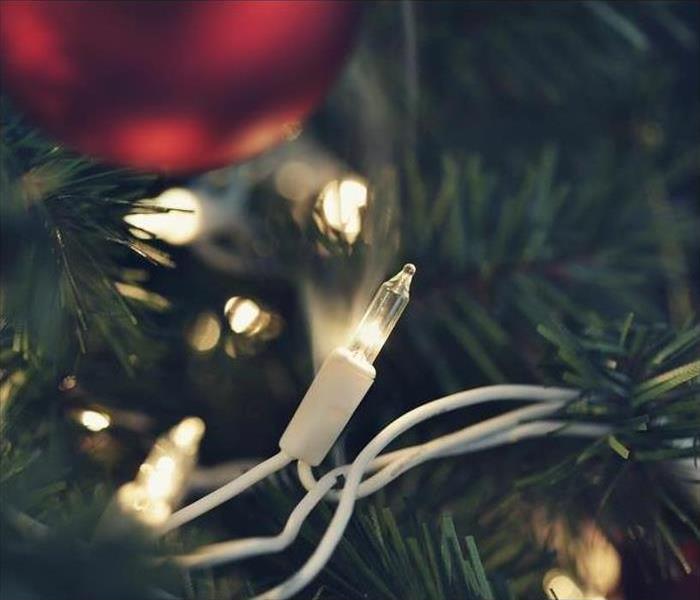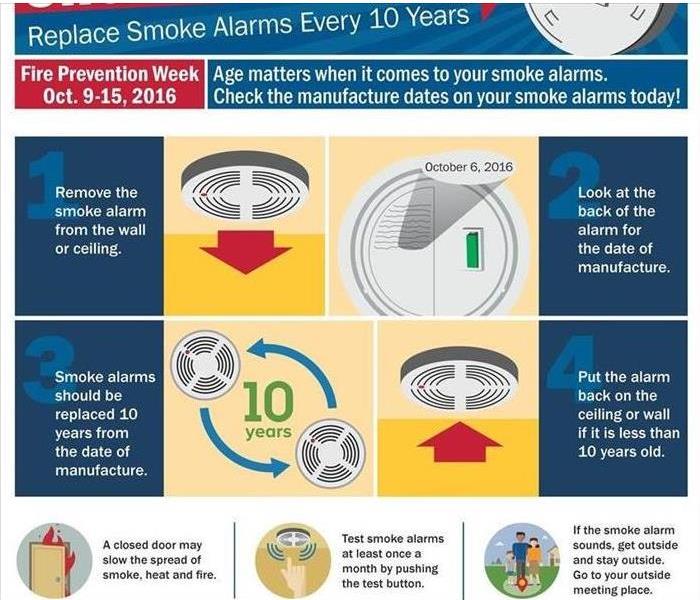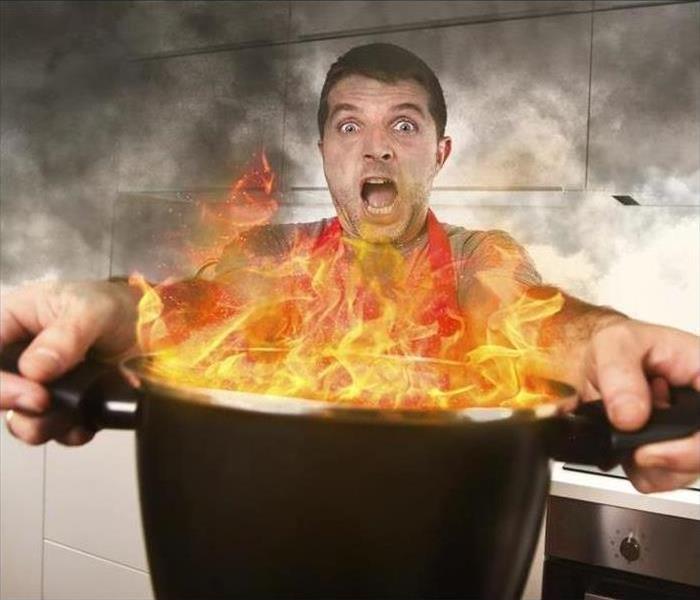Recent Fire Damage Posts
Home or Business Kitchen Fire Tips
8/17/2023 (Permalink)
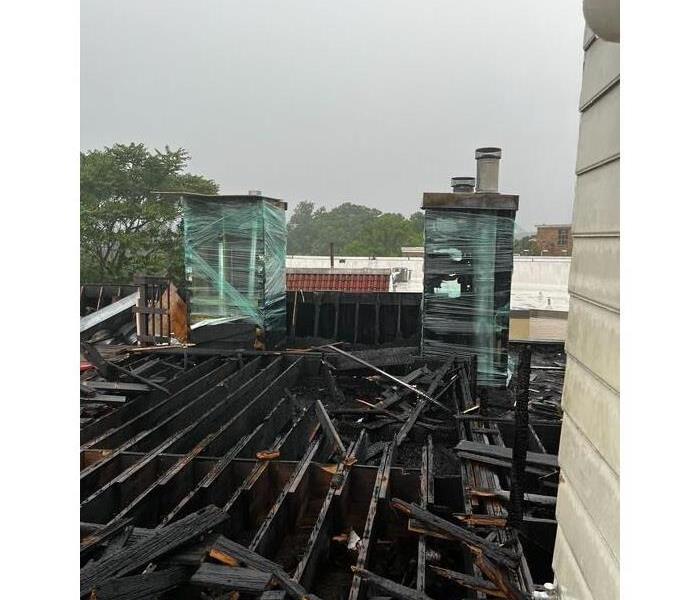 Cooking fire safety tips for your home or business
Cooking fire safety tips for your home or business
A kitchen fire, regardless of the size, can be overwhelming. According to the National Fire Protection Association, cooking has long been the leading cause of residential fires. The fire, soot, and smoke damage can affect the entire kitchen, including walls, ceiling, air ducts and appliances. SERVPRO of Washington DC, certified technicians understand the need to restore order quickly and are equipped with the technology and training needed to help ensure your property is restored to its pre-existing condition.
You can reduce the risk of a cooking fire by:
- Staying in the kitchen when frying, grilling, and broiling food
- Checking on food regularly and using a timer to remind you of cooking food
- Keeping children 3 feet away from cooking surfaces
- Keeping cooking surfaces clean to prevent food or grease builds up
Below are the different types of smoke and behavior patterns that are vital to proper restoration:
Wet smoke refers to plastic and synthetic materials that undergo smoldering at low heat levels. This process produces a lingering, acrid odor, accompanied by a sticky and smearing residue.
Dry smoke results from the combustion of paper and wood at high temperatures, causing them to turn into dry, powdery residue without any smearing.
Protein though nearly invisible, it discolors paint/varnishes. It emits a highly strong odor.
Fuel Oil Soot is produced from Furnace Puff Backs.
Other Types include tear gas, fingerprint powder and fire extinguisher residue.
At SERVPRO of Washington DC, we are mitigation and restoration experts. We will efficiently restore any water or fire damage and carefully treat and disinfect your home, so you feel safe in it again. Read more about our fire remediation services: https://www.SERVPROofwashingtondc.com/fire-smoke-damage-restoration
When a fire or water damage strikes your property, contact SERVPRO of Washington, DC to help make it “ Like it never even happened.” Call us at 202-737-8776
Washington, DC Summer Grilling Fire Safety
7/11/2023 (Permalink)
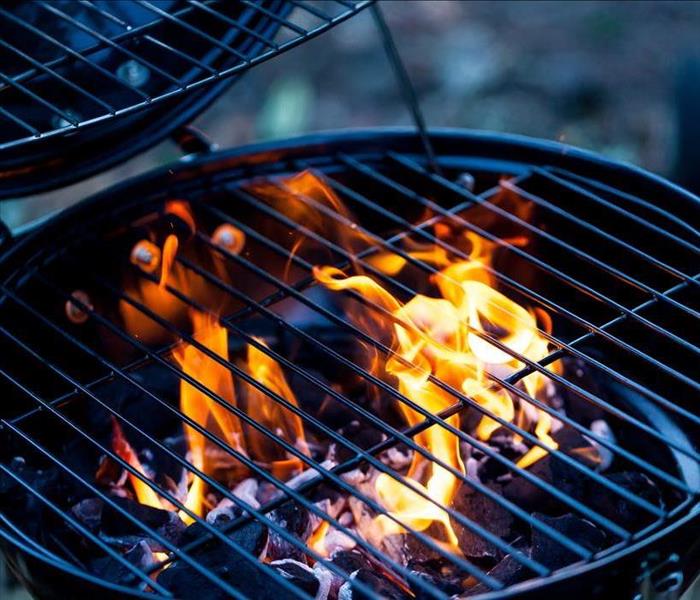 Always stay prepared and safe during the outdoor cooking season!
Always stay prepared and safe during the outdoor cooking season!
SERVPRO advises Washington, DC residents to always stay prepared and safe during the outdoor cooking season
The National Fire Protection Association (NFPA) warns families that the onset of the summer season also marks an increase in house fires caused by outside grilling activities. The NFPA estimates that grills cause 10,600 residential fires annually on average. Grill fires occur most frequently in July, then in June, May, and August.
As we continue our summer festivities, it is important to make sure our summer celebrations are fun, memorable, and safe. Below are fire safety grilling tips for you to keep in mind this summer.
For gas/propane grills:
- Check the gas tank for leaks before using it.
- Open the lids on all gas grills before lighting the grill.
For charcoal grills:
- Use only charcoal starter fluid to start the fire but never add it or any flammable liquids to a fire that is burning.
- Cool coals completely before you dispose of them in a metal container.
For all grills:
- Use propane and charcoal BBQ grills only outdoors.
- Place the grill well away from the house and deck railings. Don’t place it under leaves or branches.
- Remove grease and fat buildup from grills and trays after each use.
- Keep children and pets at least three feet away from the grill.
- Never leave the grill unattended when in use.
Our certified technicians can help restore and remediate the damages to your home or contents after a fire. Before you attempt to clean up the damage yourself, call the fire damage cleanup and restoration technicians at SERVPRO of Washington, DC. SERVPRO of Washington, DC specializes in fire and water cleanup & restoration services and repair services, helping to remediate damage for commercial and residential clients. For more information regarding our services, click here.
Understanding Fire Damage in Washington DC
5/9/2022 (Permalink)
According to the United States Fire Administration (USFA), there are some simple things we can do to prevent fire in our homes.
The (USFA) says that cooking is the number one cause of home fires.
Take these steps today to prevent a cooking fire in your home:
Stay in the kitchen when you are frying, grilling, broiling, or boiling food.
If you leave the kitchen, turn the burner off.
Keep things that can burn away from your cooking area.
Turn pot handles toward the back of the stove so they won’t get bumped.
Put working smoke alarms on every level of your home and inside and outside sleeping areas.
Test your alarms each month.
Create and practice your home fire escape plan at least twice a year.
If you need help because of fire damage, give SERVPRO of Washington DC a call (202) 737-8776.
SERVPRO of Washington, DC is locally owned and operated, and we’re a part of this community. We have the equipment, expertise, and experience to restore your fire and smoke damage.
Our smoke damage expertise and experience allow us to inspect and accurately assess the extent of the damage to develop a comprehensive plan of action. Since each smoke and fire damage situation is a little different, each one requires a unique solution tailored for the specific conditions.
Trained Technicians in Washington DC
Our technicians have extensive cleaning and restoration training and can make your home look its best.
Local Homeowners Dealing with Fire Damage
4/18/2022 (Permalink)
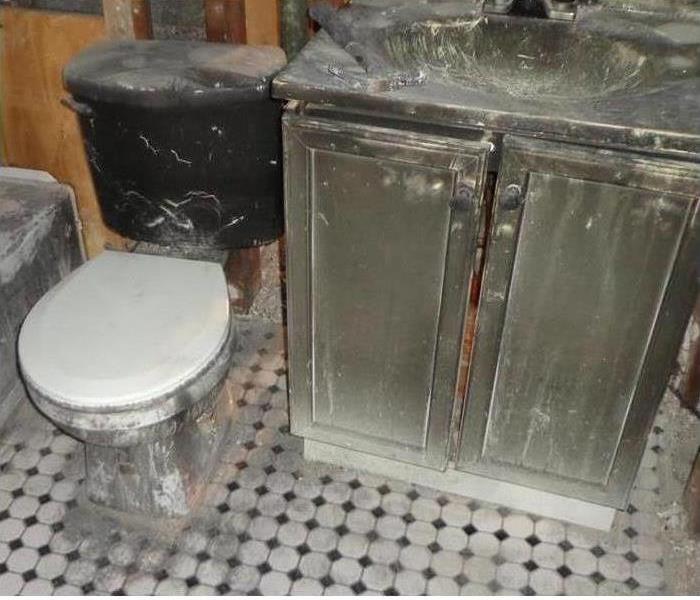 If you have fire or water damage in Washington DC call SERVPRO of Washington DC today (202) 737-8776.
If you have fire or water damage in Washington DC call SERVPRO of Washington DC today (202) 737-8776.
Fire Damage in Your Washington DC Home
Fire and smoke damage can be devastating to personal property and structures. Swift action is the only way to minimize the damage.
SERVPRO of Washington DC provides 24-hour fire and water damage restoration service.
The Right Training and Certifications Are Important
Our technicians are trained and certified. SERVPRO of Washington DC is an IICRC firm.
The Institute of Inspection Cleaning and Restoration Certification, IICRC, is a globally recognized organization whose mission is to establish higher industry standards.
As a referral source for consumers, IICRC certified firms are more likely to provide a faster, better service than non-certified competitors.
Fire And Protecting Your Home
Immediately after a fire, soot residue settles onto the property. Discoloration of porous materials is permanent, but other surfaces may be properly cleaned to remove the discoloration. Acidic soot begins staining other surfaces if not treated quickly.
Within hours all surfaces begin to suffer from fire and smoke damage. Wooden furniture may require refinishing. Metal begins to rust, pit and corrode. Painted walls begin to yellow. Clothing can become permanently stained. And finally, flooring may require refinishing or replacement.
Since each smoke and fire damage situation is a little different, each one requires a unique solution tailored for the specific conditions. We have the equipment, expertise, and experience to restore your fire and smoke damage. We will also treat your family with empathy and respect and your property with care.
Prolonged soot exposure permanently harms all surfaces and embeds in fibers. If you have fire or water damage in Washington DC call SERVPRO of Washington DC today (202) 737-8776.
We can respond immediately to your emergency and have the expertise to handle your restoration or cleaning needs.
Professional Restoration After Residential Fires
4/6/2022 (Permalink)
In the wake of a residential fire, the primary focus is on repairing the damage done to the inside of the house. However, moderate to severe incidents can lead to visible marks and blemishes on the outside of the building too. It is why SERVPRO of Washington DC conducts a full inspection of fire-damaged properties before we start any restoration work.
The good news is that stains on masonry, concrete and other structural materials are almost always superficial. While brick and concrete are not impervious to fire damage in homes, they are extremely sturdy and don’t succumb easily to heat. It means that, in most cases, we can use straightforward cleaning techniques to restore the outside of the property.
Light Stains
If there is no structural damage to the masonry, the SERVPRO of Washington DC technicians use mild cleaning agents to wash soot and smoke deposits from the surface. Where the staining is very light, dry sponging is enough to wipe away grime on block, brick, and concrete. Stubborn marks get lifted with alkaline detergents and direct scrubbing. Sodium hypocrite is highly effective when it comes to soot removal, and it leaves no residues.
Moderate Stains
The difficult thing about soot is that it can be highly acidic. If it is not removed quickly, particularly from structural materials, there is a chance of corrosive residues becoming embedded deeper and deeper into the masonry. It is why SERVPRO of Washington DC specialists pay close attention to cracked joints.
They are delicately cleaned and re pointed to dislodge any soot deposits which may be trying to move into the capillaries. Once this is complete, larger areas are dry sponged and vacuumed. Then, they are jet washed with a high powered pressure cleaning device.
Heavy Stains
The most severe staining occurs when heavily combustible materials have caught fire and burned for some time. In some cases, jet washing is still a suitable method of cleaning. We can add soot dissolving formulas like high PH degreasers, dry ice, or soda ash to increase optimal results.
SERVPRO of Washington DC is ready to help, with trained technicians and the right equipment for your restoration. IF you have questions about fire damage, call us (202) 737-8776.
Ever Notice DC Fire Sends an Engine with an Ambulance? Wonder Why?
3/29/2022 (Permalink)
DC Fire Emergency Response
The Fire and EMS Department in Washington DC is a fire-based Emergency Medical Services (EMS) Department. The vast majority of their employees are trained in both EMS and fire suppression.
If you have a life-threatening emergency, the DC Fire and EMS goal is for an EMT to arrive at your location within four to six minutes to start providing you with emergency medical care. They staff their fire trucks with EMTs, which are strategically located throughout the District, this allows them to meet their goal almost 80 percent of the time.
If you live in the District, it's good to know that help is nearby. If you have fire damage to your home you will want to call SERVPRO of Washington DC. After the fire, when it is safe to return to your home or business, call DC's trusted restoration company.
In many cases, restoration after a fire isn't easy. SERVPRO of Washington DC has trained technicians, that have the right equipment to restore your home. There maybe more to the restoration process than you realize.
Did You Know There Are Different Types of Smoke?
There are two different types of smoke, wet and dry. As a result, there are different types of soot residue after a fire. Before restoration begins, SERVPRO of Washington DC will test the soot to determine which type of smoke damage occurred. The cleaning procedures will then be based on the information identified during pretesting.
Each smoke and fire damage situation is a little different, each one requires a unique solution tailored for the specific conditions. We have the equipment, expertise, and experience to restore your fire and smoke damage. If you have questions about fire damage, give us a call SERVPRO of Washington DC (202) 737-8776.
Washington DC Homeowners Preparing for Emergencies at Home
3/21/2022 (Permalink)
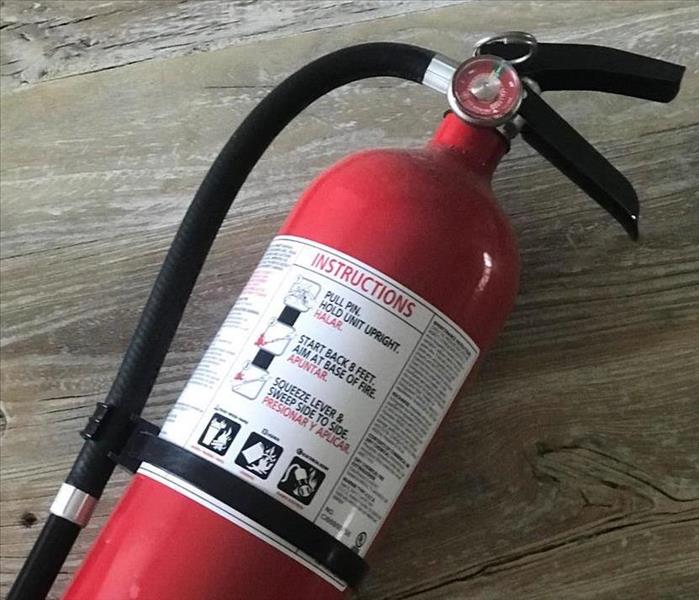 Fire extinguisher classifications are always found on the sides of the extinguishers, many of which are rated for putting out different types of fires
Fire extinguisher classifications are always found on the sides of the extinguishers, many of which are rated for putting out different types of fires
As a homeowner you need to be prepared for emergencies. If you've ever had a house fire and had to call in professionals to restore your home, you understand the importance of having a fire extinguisher on hand.
Following the steps below can ensure that you're using it correctly.
1. Assess the Situation
First, understand what you're dealing with. If the blaze is already too big, the best idea may be to call the fire department and get yourself and anyone else in the house to safety. If you can safely douse it with a fire extinguisher, you need to next make sure that you have right type for whatever material is burning.
2. Use the Right Extinguisher for the Fire
Experts classify extinguishers based on the type of fire they can combat.
These include:
Type A: for fires involving plastics, wood, textiles and paper
Type B: used on fires involving solvents, gasoline, oils, paints and other flammable liquids
Type C: for electrical fires, including plugged-in equipment like computers or appliances
Type D: for fires involving combustible powders or metals
Type E: commonly used for a kitchen fire involving fats or cooking oils
These letter classifications are always found on the sides of the extinguishers, many of which are rated for putting out fires of more than one type.
3. Remember: "PASS"
The PASS method is an easy way to remember how to use most fire extinguishers. Each letter in "PASS" stands for the first word of an operational step.
The "P" tells you to pull the pin at the top of the extinguisher; it needs to be removed before operation.
The "A" tells you to aim the nozzle. The nozzle should not be aimed at the top of the flames, but at the bottom, where the combustion is taking place.
The first "S" tells you to squeeze the handle to start the flow, and the second one reminds you to sweep from side to side while spraying.
By acting quickly and following the instructions above, you can safely prevent fire damage in some cases.
SERVPRO of Washington DC specializes in the cleanup and restoration of residential and commercial property after a fire, smoke or water damage event. Our staff is highly trained in property damage restoration. We can respond immediately to your emergency and have the expertise to handle your restoration or cleaning needs. SERVPRO of Washington DC (202) 737-8776.
A Quick Reminder of Ways You Can Prevent a Fire in Your Home
1/13/2022 (Permalink)
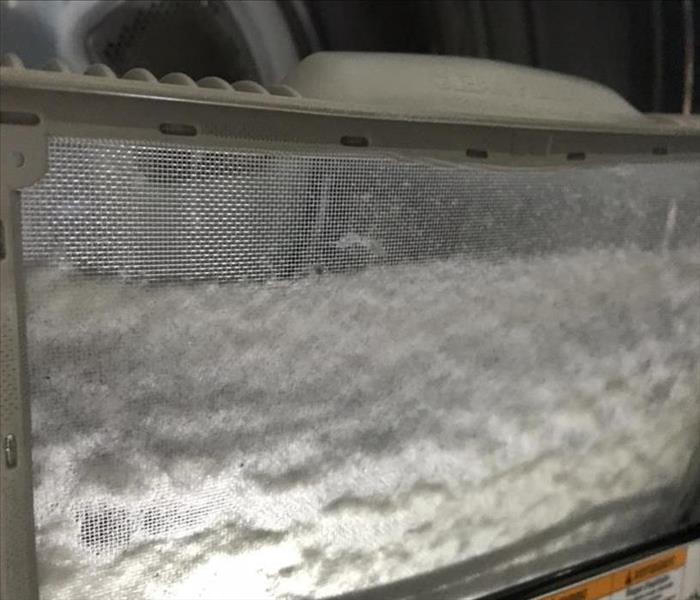 Clean the lint filter before or after each load of laundry.
Clean the lint filter before or after each load of laundry.
In the United States, firefighters respond to an estimated average of 15,970 home structure fires involving clothes dryers or washing machines each year. This is according to the National Fire Protection Association. Most of the dryer fires are caused by dust, fiber or lint. The fires caused washing machines was problems with wire and insulation.
These fires can be avoided with regular maintenance. One-third of all reported dryer fires were caused by a failure to clean.
Here are a few other tips to avoid dryer fires:
Make sure the right plug and outlet are used and that the machine is connected properly.
Do not use the dryer without a lint filter.
Clean the lint filter before or after each load of laundry.
The air exhaust vent pipe should not be restricted, and the outdoor vent flap will open when the dryer is operating.
Gas dryers should be inspected by a qualified professional.
Follow the manufacturer’s operating instructions and don’t overload your dryer.
If you have a fire in your home, you'll want to get started on cleaning up as soon as the first responders leave. If you have fire damage, call the experts at SERVPRO of Washington, DC (202) 737-8776.
Our teams are well trained, from initial and ongoing training at SERVPRO’s corporate training facility to regular IICRC-industry certification, you can be sure our staff is ready to restore your property. Don't try to take on the restoration alone, it’s worth making a call to SERVPRO of Washington, DC and let our professional crews handle the situation safely. We have earned the trust of hundreds of homeowners, business owners, and property professionals.
We have the equipment, expertise, and experience to restore your fire and smoke damage. Since each smoke and fire damage situation is a little different, each one requires a unique solution tailored for the specific conditions.
If you would like to learn more about SERVPRO of Washington, DC and restoration of fire damage SERVPRO of Washington, DC
Understanding The Research On Electrical Fires May Help You Avoid One In Your Home
5/11/2021 (Permalink)
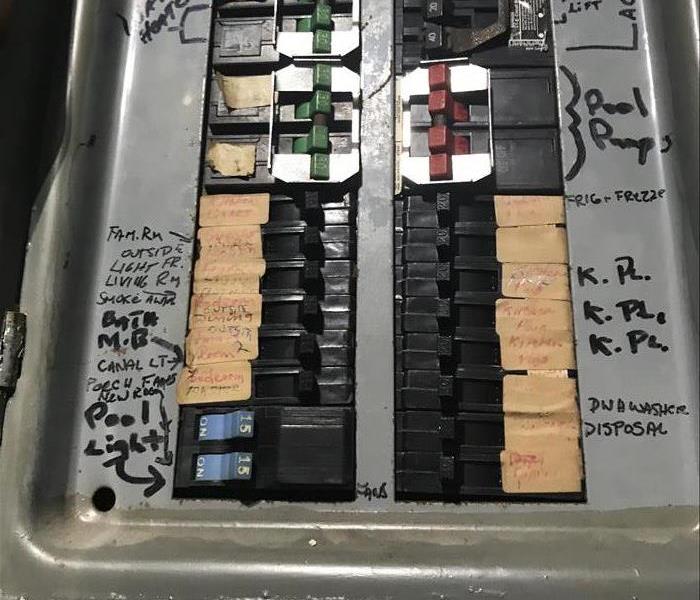 Aging electrical systems in older homes can be a source of arc faults.
Aging electrical systems in older homes can be a source of arc faults.
Electrical Fires In Washington DC
Fires involving electrical failures or malfunctions accounted for the highest share of civilian deaths (18%) and direct property damage (20%). This is according to a National Fire Protection Association report that was done in 2019.
Home electrical fires can start in wiring, electrical distribution systems, and lighting equipment, as well as in any equipment powered by electricity such as cooking, heating, office and entertainment equipment, washers and dryers, as well as electrical distribution or lighting equipment.
If you own an older home in the Washington DC area it's important that you have your outlets and wiring checked. Aging electrical systems in older homes can be a source of arc faults, either through normal wear and tear or because the systems cannot accommodate the greater demands of modern appliances.
Proper care of electrical outlets and appliances will help to prevent electrical fires. It is very important to follow manufacturer guidelines when using electrical appliance and systems, such as the wattage guidelines given when changing lightbulbs.
Be sure that you do not plug in too many electrical units into one outlet, as this could burn out the outlet and cause a fire. Be sure that you have your wiring checked regularly by an electrician.
Faulty wiring is a leading cause of electrical fires and is a common problem in homes. If you hear a sparking sound near a particular electrical outlet or appliance, or see smoke or smell burning after plugging a unit in, immediately unplug the object and call an electrician to check your wiring.
The NFPA report also points out that smoke detectors are important. Home fires involving electrical failure or malfunction are less likely to occur in the overnight hours between midnight and 8 a.m. (22% of total), but these fires account for 60% of the civilian deaths. Working smoke alarms can provide an early warning of fire and allow additional time for evacuation.
The peak months for home fires involving electrical failure or malfunction are November through March (47% of total), and these fires account for 52% of the civilian deaths. Having this information can be helpful when it comes to prevention. It is also helpful to know who to call if you have fire damage in Washington DC.
Fire Damage In Your Home
SERVPRO of Washington DC specializes in the cleanup and restoration of residential and commercial property after a fire, smoke or water damage event. Our staff is highly trained in property damage restoration and we are an IICRC Certified Firm.
Training And Experience
We believe in continuous training: from initial and ongoing training at SERVPRO’s corporate training facility to regular IICRC-industry certification, rest assured our staff is equipped with the knowledge to restore your property.
Quick Response Around Washington DC
We can respond immediately to your emergency and have the expertise to handle your restoration or cleaning needs.
Give us a call if you have questions about fire damage or the restoration process. SERVPRO of Washington DC (202) 737-8776.
SERVPRO of Washington DC provides 24-hour emergency service and is dedicated to being faster to any-sized disaster.
Fire Research Information Might Help To Keep Your Family Safe
4/20/2021 (Permalink)
More than one-quarter of the reported fires occurred in home environments, according to the National Fire Protection Association. They have also researched specific causes.
Most home fires and fire casualties result from five causes: cooking, heating equipment, electrical distribution and lighting equipment, intentional fire setting, and smoking materials.
Here are some tips to help avoid some of these causes:
Cooking
Stay in the kitchen when you are frying, grilling, or broiling food.
If you leave the kitchen for even a short period of time, turn off the stove.
Wear short, close-fitting or tightly rolled sleeves when cooking.
Keep children away from cooking areas by enforcing a "kid-free zone" of 3 feet around the stove.
Position barbecue grills at least 10 feet away from siding and deck railings, and out from under eaves and overhanging branches.
Smoking
Smoke outside and completely stub out butts in an ashtray or a can filled with sand.
Soak cigarette butts and ashes in water before throwing them away.
Never toss hot cigarette butts or ashes in the trash can.
Never smoke in a home where oxygen is used, even if it is turned off.
Oxygen can be explosive and makes fire burn hotter and faster.
Be alert - don’t smoke in bed! If you are sleepy, have been drinking, or have taken medicine that makes you drowsy, put your cigarette out first.
Electrical and Appliance Safety
Frayed wires can cause fires.
Replace all worn, old or damaged appliance cords immediately and do not run cords under rugs or furniture.
If an appliance has a three-prong plug, use it only in a three-slot outlet.
Never force it to fit into a two-slot outlet or extension cord.
Immediately shut off, then professionally replace, light switches that are hot to the touch and lights that flicker.
Portable Space Heaters
Keep combustible objects at least three feet away from portable heating devices.
Buy only heaters evaluated by a nationally recognized laboratory, such as Underwriters Laboratories (UL).
Check to make the portable heater has a thermostat control mechanism, and will switch off automatically if the heater falls over.
Only use crystal clear K-1 kerosene in kerosene heaters.
Never overfill it. Use the heater in a well-ventilated room.
Fireplaces and Woodstoves
Inspect and clean woodstove pipes and chimneys annually and check monthly for damage or obstructions.
Use a fireplace screen heavy enough to stop rolling logs and big enough to cover the entire opening of the fireplace to catch flying sparks.
Make sure the fire is completely out before leaving the house or going to bed.
Children
Take the mystery out of fire play by teaching children that fire is a tool, not a toy.
Store matches and lighters out of children's reach and sight, preferably in a locked cabinet.
Never leave children unattended near operating stoves or burning candles, even for a short time.
More Prevention Tips
Never use stove range or oven to heat your home.
Keep combustible and flammable liquids away from heat sources.
Portable generators should NEVER be used indoors and should only be refueled outdoors or in well ventilated areas.
Our Fire Damage Restoration Services In Washington DC
If you have fire damage in your home, SERVPRO of Washington DC can help.
SERVPRO of Washington DC is available 24 hours a day for restoration after damage, large or small. When you are dealing with water damage, immediate action is critical.
A delay of just a few hours can greatly increase the severity of the damage.
Since each smoke and fire damage situation is a little different, each one requires a unique solution tailored for the specific conditions. We have the equipment, expertise, and experience to restore your fire and smoke damage.
We are ready to help when you have fire damage, SERVPRO of Washington DC (202) 737-8776.
How Quickly Do Washington DC Firefighters Respond?
3/29/2021 (Permalink)
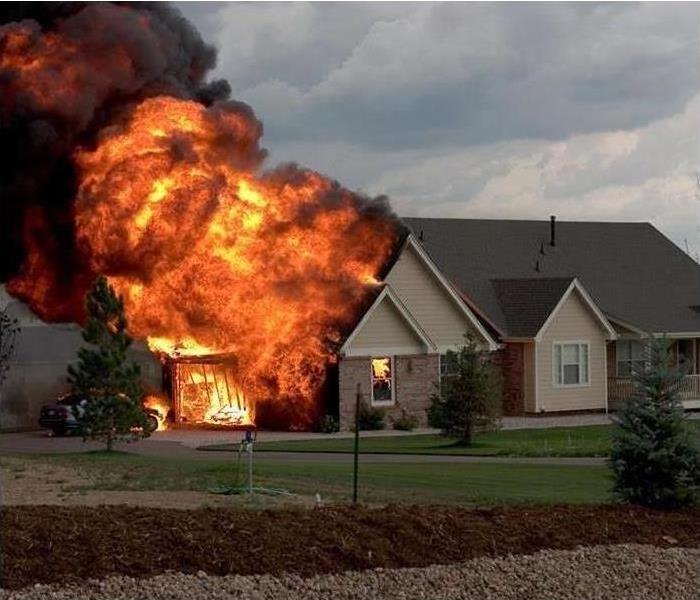 We'll never be as fast as the fire department, but SERVPRO of Washington DC has technicians ready to respond 24 hours a day (202) 737-8776
We'll never be as fast as the fire department, but SERVPRO of Washington DC has technicians ready to respond 24 hours a day (202) 737-8776
Washington DC Firefighters Responding To Your Home In 5 Minutes And 20 Seconds Or Less
If you live in Washington DC how quickly can you expect firefighters to respond if you have an emergency?
According to a recent performance report from the Fire and Emergency Medical Services Department, they'll get to you pretty fast. In 2020, 96.6% percent of the time it less than 5 minutes and 20 seconds for a first responding engine to arrive to a structure fire in Washington DC.
Your going to need quick response after the fire as well
SERVPRO of Washington DC provides 24-hour emergency service and is dedicated to responding immediately to your home and have the expertise to handle your restoration or cleaning needs.
Following a fire, wall surface areas can be harmed by soot. Non-water based cleaners need to be used to remove soot from walls. These kinds of chemicals should be handled by a specialist due to the fumes and toxicity. Water-based cleaning items can cause spots to bleed into plaster walls which is why a trained specialist should be left to deal with these chemicals.
Because of the convection pattern that flames typically form during ignition, smoky residue saturates every opening. The soot constructs up in layers that may end up being solidified and tough to eliminate which is another reason to leave the cleaning to a specialist. When the cleaning teams do arrive, they promptly different salvageable items from charred debris, taking the things creating the strongest odors out for cleaning.
Most importantly, a restoration effort reduces the after-effects a blaze can have on the health of those who return in. If a homeowner does not have the property restored by a professional, the results can be found later. To an untrained eye they might believe the issue has been fixed, but instead they experience the remaining impacts of indoor air pollution for months.
Since each smoke and fire damage situation is a little different, each one requires a unique solution tailored for the specific conditions. We have the equipment, expertise, and experience to restore your fire and smoke damage. We will also treat your family with empathy and respect and your property with care.
SERVPRO of Washington DC has technicians that are leading experts in fire restoration. They are trained to help remove your belongings as well as cleaning and storing them until your property has been restored to its original condition. If you have fire damage, call today (202) 737-8776.
How to Minimize Fire Damage
3/22/2021 (Permalink)
One of the first concerns after a fire in a home or a fire in a business is minimizing additional fire damage. Commercial fire loss may have a significant impact on a company's ability to continue operations. A restoration company should be contacted as soon as the premises are secure in order to recover as much value as possible from a property that has suffered fire, smoke, and soot damage. The fire cleanup team will assist in assessing the property's damage and listing the objects that are present. They can also do fire damage repair and have an estimate on the spot.
Repair
A repair company will also help with boarding up a property if commercial fire damage has destroyed any doors or windows. Roofs and walls that may have been cut into by firefighters during the fire may also need to be boarded up. Because of the need to test the structural integrity of much of the building's structure, this task may be much more complex than it seems. Before a person tries to board up his or her own property after a fire in a home or a fire in a company, a licensed contractor should be contacted. Boarding up a property that has suffered fire damage is necessary both to prevent the building from collapsing and to protect it. Boarding up a fire-damaged property is necessary both to prevent the building from collapsing and to protect it from intruders who could cause further harm.
Fire Cleanup
The fire cleanup would also include drying up any water that firefighters might have flooded the area with in order to extinguish the fire. This water can cause significant water damage and encourage mold growth. A qualified technician may use a variety of techniques to dry out the property and prevent mold formation, including the use of industrial equipment such as a water extractor, a dehumidifier, and an air current mover. This method would also help to eliminate the smoke odor that will linger after a burn.
The fire cleanup would also include drying up any water that firefighters might have flooded the grounds with in order to extinguish the fire. This water can cause significant water damage as well as promote mold growth. A qualified technician may use industrial equipment such as a water extractor, a dehumidifier, and an air current mover to dry out the property and prevent mold growth. This procedure would also help to eliminate the smoke odor that will linger after a burn.
Restoring
If such objects cannot be restored due to fire loss, they can be more easily replaced. In this situation, the repair company will also assist in disposing of these objects properly. After a fire in a home or a store, there will be a lot of debris to clean up. While smoke and soot damage is reversible, property owners can opt to repair objects and surfaces instead.
After The Fire
After all soot and smoke damage has been repaired, all surfaces are sanitized and swept. The fire cleanup crew will also educate property owners on how to avoid potential commercial fire damage. Any lingering smoke odor will be ventilated until it is gone. If the smoke odor persists, chemical remedies such as ozone treatment or thermal fogging are also options, depending on the property owner's needs. Additional treatments can be needed weeks, if not months, after the initial incident.
Accidental Fires in Washington DC
3/15/2021 (Permalink)
Reading time:1 min 44 sec
Burning food can cause harm to the smell of your home
Why do the last five minutes of a soccer game on TV seem to take an hour? You've wanted to make the salmon dish that your uncle was telling you about, so you've prepared the first thing this morning.
Starting the fourth quarter, you wanted to put it in the oven right when your team fell behind 14 points and the game appeared to be over.
That's when the magic starts! The rookie they've just drawn will be put into the game and the biggest revival in the history of the franchise will begin.
With 10 seconds remaining, they tie up the game as the wide receiver torched the defender. It was so bad that you could smell the burning as though you were there.
Wait, this isn't a torched protector... that's your Salmon burning in the oven!
It happened to the best of us, and we see it every day. If this happens to you, call SERVPRO of Washington, DC. and we’ll come out and fix the damage. Not all smoke and soot are the same, and qualified professionals like us at SERVPRO of Washington DC know how to deal with each form that occurs.
Smoke and Soot Facts
Hot smoke migrates to cooler areas and to the upper levels of the building.
Smoke moves around plumbing systems, drifting through the holes used by pipes to move from floor to floor.
The type of smoke can have a significant impact on the restoration process.
Different Types of Smoke
The most common smoke damages that occur after a fire are wet smoke and dry smoke. As a consequence, after a burn, there are various forms of soot residues. Before the restoration starts, SERVPRO will examine the soot to assess which type of smoke damage has occurred. The cleaning procedures would then be focused on the information found during the pre-testing process. Here is some more information:
Wet Smoke – Plastic and Rubber
- Low heat, smoldering, pungent odor, sticky, smeary. Smoke webs are more difficult to clean.
Dry Smoke – Paper and Wood
- Fast burning, high temperatures, heat rises, therefore, smoke rises.
Protein Fire Residue – Produced by evaporation of material rather than from a fire.
- Virtually invisible, discolors paints and varnishes, extreme pungent odor.
Our Fire Damage Restoration Services
Because each situation of smoke and fire damage is slightly different, each needs a unique solution tailored to particular circumstances. Here at SERVPRO of Washington, DC, we have the tools, skills, and experience to repair fire and smoke damage. We will also treat your family with empathy and reverence, as well as your property.
How to Minimize Fire Damage
4/22/2020 (Permalink)
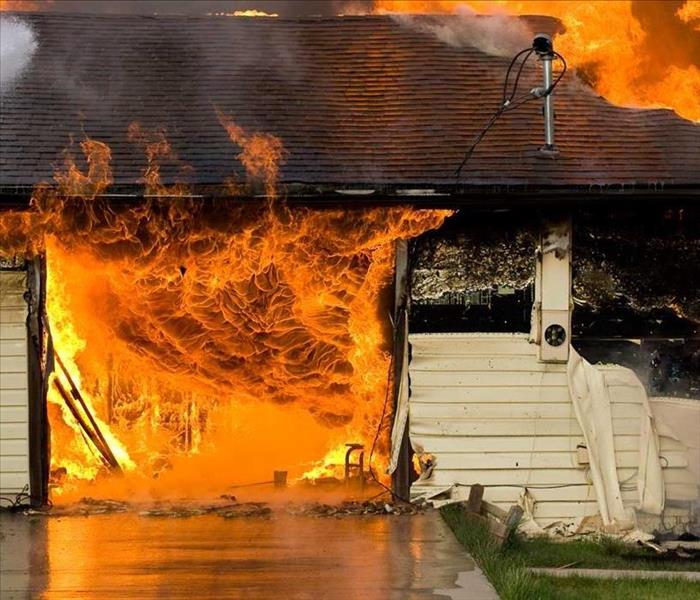
Minimizing further fire damage is one of the first considerations after a fire in a home or a fire in a business. Commercial fire damage can greatly affect the ability of a business to continue operations. In order to recover as much value as possible from a property that has undergone fire damage, smoke damage, and soot damage, a restoration company should be contacted immediately after the premises are secure. The fire cleanup team can aid in evaluating the damage to the property and listing the items that are present. They can also perform fire damage restoration and offer an estimate onsite.
A restoration company will also be instrumental in boarding up a property if commercial fire damage has compromised any doors or windows. Roofs and walls that may have been cut into by firefighters during the fire may also need to be boarded up. This process can be much more difficult than it originally appears due to the need to evaluate the structural integrity of much of the buildings foundation. A professional contractor should be contacted before an individual attempts to board up his or her own property after a fire in a home or a fire in a business. Boarding up a property that has undergone fire damage is important both to prevent the collapse of the building as well as to protect it from any intruders who may cause additional damage.
The fire cleanup will also involve drying up all the water that firefighters may flood the premises with in order to put out the fire. This water can cause extensive water damage as well as promote the growth of mold. A certified technician can employ all manner of techniques to dry out the property and prevent mold growth using industrial equipment that may include a water extractor, a dehumidifier, and an air current mover. This process will also somewhat remove the smoke smell that may persist after a fire.
After a list of personal belongings have been identified and list along with the property owner, a restoration company can work with him or her to reverse the smoke damage and soot damage that may have settled into the property. Surfaces can often be fully cleaned, even if it is porous like carpet. Deep vacuuming and steam injection are often successful in removing the oily soot that may lead to residual smoke smell. Fire damage restoration requires techniques that require specialized equipment, and these techniques can be discussed with the property owner in order to decide whether or not to proceed with restoration.
If fire damage restoration is not possible on certain items, they may be more easily replaced. In this case, the restoration company will also help to dispose of these items in the appropriate manner. After a fire in a home or a fire in a business, much debris will need to remove anyway. Smoke damage and soot damage is reversible, but property owners sometimes choose to replace items and surfaces instead.
All surfaces are sanitized and cleaned after all soot damage and smoke damage has been reversed. The fire clean up team will also instruct property owners on how to prevent commercial fire damage in the future. Any residual smoke smell will be ventilated until gone. If the smoke smell persists, chemical solutions like an ozone treatment or thermal fogging are also options depending on the needs of the property owner. Additional treatments may be needed weeks or even months after the initial incident.
Fire cleanup is extremely daunting for an individual who is shocked by a fire in a home or a fire in a business. However, fire damage restoration is normal for a fire cleanup specialist, even after extension commercial fire damage. A specialist who has the experience and the expertise to guide a property owner will ensure that fire damage is minimized as much as possible.
Smoke Alarms
4/9/2020 (Permalink)
Fire prevention is one of the most important things for you and your family. Ensuring that your home has smoke alarms are one of the first steps in fire prevention. According to the National Fire Protection Association, 3 out of 5 home fire deaths were caused because of no smoke alarm or no working smoking alarm. Smoke alarm cut the risk of people dying. Hardwired fire alarms operated 94% of the time versus battery powered alarms. The battery may tend to fail because of missing, disconnected or dead batteries. Ionization smoke alarm is more responsive to flaming fires and can detect a fire faster during the night hours when you are sleeping to give you extra time to safety assist or waken others to evacuate from a fire.
Fire, Smoke, and Soot Restoration
3/30/2020 (Permalink)
Your home or commercial facility contains many of your most valuable possessions. SERVPRO® Franchise Professionals understand the trauma that follows a loss. When fire damage takes control of your life, we help you take it back.
Contents Services
- Inventory – One of the first priorities in fire restoration is to complete an accurate inventory to help ensure you can properly account for all your belongings. Your SERVPRO® Franchise Professional can provide a detailed room-by-room inventory of contents, including digital photographs and bar codes for each item, suitable for filing insurance claims forms and relieving you of this often stressful and time consuming process.
- Move Outs – When the structure has suffered extensive damage, the cleanup and restoration process may need to be facilitated by relocating the contents for cleaning, deodorization and storage while structural repairs are being completed. A supervised moving crew can carefully pack and move the entire contents of your home or office.
- Contents Cleaning – All of the restorable contents in affected areas will be professionally cleaned and deodorized. This includes area rugs, furniture, draperies and upholstery. SERVPRO® Franchise Professionals begin by carefully inspecting and testing all fabrics in the structure to determine which cleaning methods are most appropriate. SERVPRO® Franchise Professionals can provide wet or dry cleaning. Additionally, all the other restorable contents will be cleaned and deodorized as close to preloss condition as possible. This includes electronics, art, wood furniture, kitchen items, clothing, bedding, bric-a-brac and much more.
Structural Cleaning
- Ceilings and Walls – Your local SERVPRO® Franchise Professional will pretest to analyze the extent of the damage to your ceilings, walls and woodwork. SERVPRO® Franchise Professionals can reduce the cost of recovery by expertly cleaning lighter soot without incurring the expense associated with repainting. When higher concentrations of soot exist, SERVPRO® Franchise Professionals will clean the area to prepare the surface for smooth painting.
- Carpet & Floor Restoration – After a smoke or fire damage, carpeting and floors will often need a deep and thorough cleaning. Residue from smoke or soot settles and is ground into flooring every time someone walks on it. Whether it is wall-to-wall carpeting or the most expensive tile floor, SERVPRO® Franchise Professionals have the experience, equipment and cleaning products to clean and protect all types of flooring surfaces.
- Ductwork – The ductwork and HVAC system will be inspected to determine if they were affected by the smoke damage. Depending on the amount of damage, the proper restoration process will be determined to clean and deodorize your HVAC and duct system.
Deodorization
- SERVPRO® Franchise Professionals provide specialized services that rid your home or place of business of offensive odors left by fire or smoke damage. SERVPRO® Franchise Professionals do not merely cover up lingering odors with a fragrance, they seek out the sources of the odor and remove them. Ask your SERVPRO® Franchise Professional to explain the various deodorization methods available and which will work best for you.
Questions?
Call Us Today – 202-737-8776
Fire Safety
3/30/2020 (Permalink)
Clothes dryer fires happen more often than one might think, accounting for 16,800 home structure fires in 2010 and doing more than $236 million in property damage according to the National Fire Protection Association. The most frequent causes of fires in dryers are lint/dust (29%) and clothing (28%). In washers, they are wire or cable insulation (26%), the appliance housing (21%) or the drive belt (15%).
Dryers were involved in 92% of the Washer/Dryer fires; the risk of fire was basically the same for both gas and electric-powered dryers.
Safety tips:
- Clean the lint screen frequently and don’t run the dryer without it.
- For gas and propane dryers, make sure there aren’t any leaks in the lines.
- Vent the dryer to the outside of the house and ensure nothing blocks the vent pipe.
- Clean the vent pipe and the area where the screen is housed.
- Keep the area around the dryer free of combustible materials.
The Fire is Out, Now What?
3/24/2020 (Permalink)
Residential and commercial fires are unpredictable and can be devastating.
Hopefully you have given thought to fire prevention for your home. In addition to taking these steps, you have also developed an escape plan with your family. In the unfortunate case of a serious fire, would you know where to turn after the fire crews leave?
SERVPRO of Washington D.C. 202-737-8776 is the simple, effective solution. We'll respond quickly and get to work restoring your property.
One of the first steps in our fire damage restoration process is the inspection.
Without proper and careful inspection, we cannot be sure of risk factors in the environment, the extent of damage, critical utility locations, and numerous other important factors. Inspection can sometimes be a lengthy process, as SERVPRO inspectors have to look for and catalog many different factors.
Here are some of the things that we look for in homes that have taken fire damage.
Structural Instability
One of the most important considerations when inspecting fire damage is structural stability. Fires, as they burn through supports and other structural components, can create unstable conditions and high potential for collapse. Our technicians look for signs of structural weakening to ensure the safety of both you and SERVPRO technicians, such as warped walls, burned columns, caved-in ceilings, buckled door frames, and scraping between doors, windows, and their upper frames. Any of these may be an indicator of a weakened structure, so knowing of them before any work begins has the potential to save lives.
Spots for Tarping and Boarding
Immediately following inspection, our crews move in with tarps and boards to seal up any windows, doors, or holes in the home that leave it open to the elements. Inspectors look for these openings and compose plans to seal them most effectively.
Damage Inspection
Of course, the central part of any fire damage inspection is what has been hurt, and how much. Inspectors will catalog items, surfaces, and areas which have taken damage, describing in detail for our other teams how bad the situation is and what factors caused it. From there, our technicians can work to apply appropriate cleanup processes and measures. If you have used our ERP (Emergency Ready Profile) system, this process may be greatly accelerated as our inspectors will have access to plans and inventory lists beforehand.
SERVPRO of Washington D.C. works with you to get fire damage cleaned up quickly, cheaply, and with the minimal safety concern. Call us at all hours at 202-737-8776
Puffback Prevention
3/17/2020 (Permalink)
For those who live in colder parts of the United States, there are home appliances that play a critical role when it comes to your furnace. A quality furnace can ensure optimal comfort inside your home while minimizing the amount of energy you consume at home. Even a top-quality furnace will not provide consistent results if you do not maintain it properly.
Those who neglect regular furnace servicing may find themselves dealing with a wide variety of issues, including a common problem such as a puffback. Here are some key points to know about your furnace at home and how it could produce a puffback when it is least expected:
- What is a Puffback?
Puffbacks are explosions of soot and smoke caused by improper furnace ignition. They typically occur when excessive amounts of fuel vapors accumulate inside of your furnace’s burner chamber. When the furnace ignites, these vapors explode. Fortunately, this explosion does not have the force to put you and your family at risk. However, over time, a puffback can make a serious impact on your HVAC system.
When an oil burner does not ignite immediately, excess oil builds up within the combustion chamber. The fuel could then ignite explosively, like the backfiring of a car. Depending on how much fuel has built up in the chamber, the result can range from a small explosion to a cloud of oily smoke.
This disaster poses the greatest threat due to the excessive amounts of soot and smoke they produce. Over time, soot builds up on the inner surfaces of your furnace and heat exchanger, often leading to problems such as corrosion and clogged burner nozzles. The worst aspect of a puffback is that both soot and smoke will find their way and impact your home’s air quality.
- Oil and Gas Furnaces Can Have Puffbacks
Puffbacks can occur in both natural gas and oil-burning furnaces. All furnaces have the capability of accumulating fuel vapors in the combustion chamber if it is not properly maintained. With that said, a puffback poses a more common problem for oil furnaces.
Fun fact, oil furnaces have greater maintenance needs. A neglected oil furnace will accumulate issues that lead to a puffback at a faster rate. Furthermore, oil furnaces tend to experience more severe puffbacks. Heating oil dissipates at a lower rate than natural gas. This will ultimately allow it to accumulate in greater quantities.
- Issues Leading Up to a Puffback
A puffback may stem from a variety of furnace problems, many of which relate back to a lack of maintenance. The most direct mechanism of puffback involves leaks in or around the furnace’s combustion chamber. These leaks allow fuel to trickle into the combustion chamber even when the furnace is not running. As soon as the burner turns on, fuel will ignite.
A puffback can also be due to the exhaust flue or chimney. If exhaust gases cannot vacate the system quickly enough, they will remain inside of the furnace. This specific scenario alters the delicate pressure balance needed for proper combustion, changing the air-fuel ratio and leading to a puffback. Such pressure problems may cause additional damages to the heat exchanger.
Puffbacks frequently happen as the result of clogged burners. When fuel cannot enter a furnace efficiently, misfires allow for fuel (that was not burned) to accumulate inside the combustion chamber. Finally, puffbacks may stem from excessive dirt ignition electrodes. A dirty electrode may fail to generate the spark needed for combustion, instead of allowing fuel to puddle inside of the furnace.
As a result, the mess of soot and debris will be mixed with oil. It can quickly spread throughout your home, covering cabinets, walls, furniture, and everything else you would never want covered in black, sticky grime. In addition to the mess, puffbacks contaminate the air and surfaces with unhealthy material. The consequences can be unpleasant, but SERVPRO of Washington D.C. can work with you in the cleaning and restoration process of your home and belongings.
Should a puffback occur, here are some helpful tips to follow:
- Assess the damage
- Wash all affected clothing and throw out exposed food
- Contact a technician to repair the malfunctioning furnace
- Contact SERVPRO of Washington D.C.
SERVPRO of Washington D.C. is a trusted leader in the restoration industry. We have the specific damage restoration training, personnel, and equipment to quickly restore your home to its original state. If you need someone to help with any type of smoke, soot, or fire damage, our high trained technicians will by there to start the restoration process. For more information about what it takes to manage a puffback and prevention steps towards avoiding an expected disaster, please reach out to us at SERVPRO of Washington D.C. at 202-737-8776.
3 Steps To Smother a Grease Fire
3/4/2019 (Permalink)
Grease fire can burn hotter that other types of kitchen fire3 Steps To Smother A Grease Fire
Grease fires can burn hotter than most other types of kitchen fires. It is important to know how to safely extinguish these fires, as using a pressurized fire extinguisher may actually cause this type of fire to spread. Here are the three steps necessary to safely smother a grease fire.
1. Turn Off the Heat
The first step to handle smoking grease or a fire is to turn off the source of heat. This can prevent grease from becoming even hotter. Do not attempt to move a pan or pot off of the burner, as motion can intensify the fire.
2. Smother the Flames
There are two effective ways to quickly smother flames. It is a good idea to keep baking soda and salt handy if you are cooking with large amounts of grease. Baking soda consists of sodium bicarbonate, which releases carbon dioxide. Salt draws heat out of grease to limit its combustibility.
An intense grease fire will draw in oxygen through convection and may resist this smothering effect. Limit the supply of oxygen by immediately covering the pot or pan with a metal lid, cookie sheet, or another pot or pan.
3. Make Sure the Fire Is Out
Monitor the situation to make sure that a fire is not spreading. Wait at least 20 minutes for grease to cool before checking the condition under the cover. Lifting a cover too quickly can introduce a surge of oxygen that may cause a fire to reignite.
What To Do Before Help Arrives
3/4/2019 (Permalink)
What To Do Before Help Arrives
Fire DamageA fire can leave behind soot, smoke damage and a host of other problems.
Ceilings, walls, woodwork, carpeting, and floors will often need a thorough
professional cleaning. If your home or business suffers a fire, it is important to take the appropriate steps to prevent further damage until your local SERVPRO®. The following tips may help reduce damage and increase chances of a successful restoration.
DO:
Limit movement in the home to prevent soot particles from being embedded into upholstery and carpet.
Keep hands clean. Soot on hands can further soil upholstery, walls, and woodwork.
Place dry, colorfast towels or old linens on rugs, upholstery, and carpet traffic areas.
If electricity is off, empty freezer/refrigerator completely and prop doors open to help prevent odor.
Wipe soot from chrome kitchen/bathroom faucets, trim and appliances, then protect these surfaces with a light coating of lubricant.
If heat is off during winter, pour RV antifreeze in sinks, toilet bowls, holding tanks and tubs to avoid freezing pipes and fixtures.
Tape double layers of cheesecloth over air registers to stop particles of soot from getting in or out of the HVAC system.
DON'T:
Don’t attempt to wash any walls or painted surfaces without first contacting your SERVPRO® of West Knoxville and Farragut
Do not attempt to clean any electrical appliances (TV sets, radios, etc.) that may have been close to fire, heat or water without first consulting an authorized repair service.
Do not consume any food or beverages that may have been stored close to fire, heat or water, as they may be contaminated.
If the ceiling is wet, do not turn on ceiling fans.
Wiring may be wet or damaged and cause electrical shock, and air movement may create secondary damage.
Don’t send garments to the dry cleaner. Improper cleaning may set
in smoke odor.
Can Lightning Start a House Fire?
3/4/2019 (Permalink)
Can Lightning Start a House Fire?
If your home sustains damage from a lightning fire, contact a company that provides fire restoration services.
Lightning is the cause of a number of house fire every year. A lightning fire typically occurs when a hot flash strikes a combustible object or travels through conductive metal objects and then ignites combustibles. It is important to recognize the risks of a direct strike and a phenomenon called side flash in order to safely respond to a strike on or around your home. It is almost always a good idea to call the fire department if your home has been struck.
1. Direct strike: A direct hot strike can cause a fire, particularly if it makes contact with combustible material in or around your home. As soon as your home is struck, check for any signs of fire and contact the fire department from a cellular phone as soon as possible. Avoid using a landline in case current is traveling through the wiring. You can rest easy once you are sure that your residence is not running an elevated risk for lightning fire.
2. Side flash: This phenomenon occurs when a strike travels through conductive metal features such as downspouts, gutters, gas lines, water pipes, window frames, or wiring and then ignites combustible building materials such as insulation. Lightning does not require conductive objects to travel down to the ground, but if a side flash occurs, it may lead to hidden fires within the attic or walls of a house.
Whether a direct hot strike starts a fire or the transmission of current through materials in your home in the event of a side strike ends up igniting combustible materials, only the fire department can ensure that your home is safe. A hidden house fire can put homeowners at risk and cause extensive damage prior to being detected. If your home sustains damage from a lightning fire, contact a company that provides fire restoration services
How to Minimize Fire Damage
3/4/2019 (Permalink)
How to Minimize Fire Damage
Minimizing further fire damage is one of the first considerations after a fire in a home or a fire in a business. Commercial fire damage can greatly affect the ability of a business to continue operations. In order to recover as much value as possible from a property that has undergone fire damage, smoke damage, and soot damage, a restoration company should be contacted immediately after the premises are secure. The fire cleanup team can aid in evaluating the damage to the property and listing the items that are present. They can also perform fire damage restoration and offer an estimate onsite.
A restoration company will also be instrumental in boarding up a property if commercial fire damage has compromised any doors or windows. Roofs and walls that may have been cut into by firefighters during the fire may also need to be boarded up. This process can be much more difficult than it originally appears due to the need to evaluate the structural integrity of much of the buildings foundation. A professional contractor should be contacted before an individual attempts to board up his or her own property after a fire in a home or a fire in a business. Boarding up a property that has undergone fire damage is important both to prevent the collapse of the building as well as to protect it from any intruders who may cause additional damage.
The fire cleanup will also involve drying up all the water that firefighters may flood the premises with in order to put out the fire. This water can cause extensive water damage as well as promote the growth of mold. A certified technician can employ all manner of techniques to dry out the property and prevent mold growth using industrial equipment that may include a water extractor, a dehumidifier, and an air current mover. This process will also somewhat remove the smoke smell that may persist after a fire.
After a list of personal belongings have been identified and list along with the property owner, a restoration company can work with him or her to reverse the smoke damage and soot damage that may have settled into the property. Surfaces can often be fully cleaned, even if it is porous like carpet. Deep vacuuming and steam injection are often successful in removing the oily soot that may lead to residual smoke smell. Fire damage restoration requires techniques that require specialized equipment, and these techniques can be discussed with the property owner in order to decide whether or not to proceed with restoration.
If fire damage restoration is not possible on certain items, they may be more easily replaced. In this case, the restoration company will also help to dispose of these items in the appropriate manner. After a fire in a home or a fire in a business, much debris will need to remove anyway. Smoke damage and soot damage is reversible, but property owners sometimes choose to replace items and surfaces instead.
All surfaces are sanitized and cleaned after all soot damage and smoke damage has been reversed. The fire clean up team will also instruct property owners on how to prevent commercial fire damage in the future. Any residual smoke smell will be ventilated until gone. If the smoke smell persists, chemical solutions like an ozone treatment or thermal fogging are also options depending on the needs of the property owner. Additional treatments may be needed weeks or even months after the initial incident.
Fire cleanup is extremely daunting for an individual who is shocked by a fire in a home or a fire in a business. However, fire damage restoration is normal for a fire cleanup specialist, even after extension commercial fire damage. A specialist who has the experience and the expertise to guide a property owner will ensure that fire damage is minimized as much as possible.
Be Disaster Aware Take Action To Prepare
3/4/2019 (Permalink)
The regular occurrence of natural disasters demonstrates the importance of being prepared for any emergency or disaster. While each situation is unique, your family can be better prepared if you plan carefully, put emergency procedures in place, and practice for all kinds of emergencies.
The following are measures you and your family can take to start getting ready. A commitment to begin planning today will help support your family, home, and the community. Review the following questions to learn if your family and home are prepared.
Be Informed
Do you know what kind of emergencies might affect your home or daily life? Do you know what you and your family will do in an emergency situation?
Prepare Your Emergency Plan
Do you have an evacuation and shelter-in-place plan? Do you have a plan to communicate with your family before, during, and after an incident? Do you have an emergency supply kit?
Practice the Emergency Plan
Have you practiced your plan recently? Does your family know where to go in the event of a natural disaster? Have you reviewed your plans in the last 12 months?
Review Insurance Coverage
Have you reviewed your insurance coverage recently to see if you’re covered in a disaster?
Secure Your Home
Have you conducted a room-by-room walk-through to determine what safety measures can be taken?
Improve Cyber Security
Have you installed a firewall on your computer? Do you regularly update your antivirus software?
If you answered “No” to any of these questions, visit ready.gov and learn how to better prepare your family and home for an emergency or natural disaster.
How to Minimize Fire Damage
3/4/2019 (Permalink)
How to Minimize Fire Damage
Minimizing further fire damage is one of the first considerations after a fire in a home or a fire in a business. Commercial fire damage can greatly affect the ability of a business to continue operations. In order to recover as much value as possible from a property that has undergone fire damage, smoke damage, and soot damage, a restoration company should be contacted immediately after the premises are secure. The fire cleanup team can aid in evaluating the damage to the property and listing the items that are present. They can also perform fire damage restoration and offer an estimate onsite.
A restoration company will also be instrumental in boarding up a property if commercial fire damage has compromised any doors or windows. Roofs and walls that may have been cut into by firefighters during the fire may also need to be boarded up. This process can be much more difficult than it originally appears due to the need to evaluate the structural integrity of much of the buildings foundation. A professional contractor should be contacted before an individual attempts to board up his or her own property after a fire in a home or a fire in a business. Boarding up a property that has undergone fire damage is important both to prevent the collapse of the building as well as to protect it from any intruders who may cause additional damage.
The fire cleanup will also involve drying up all the water that firefighters may flood the premises with in order to put out the fire. This water can cause extensive water damage as well as promote the growth of mold. A certified technician can employ all manner of techniques to dry out the property and prevent mold growth using industrial equipment that may include a water extractor, a dehumidifier, and an air current mover. This process will also somewhat remove the smoke smell that may persist after a fire.
After a list of personal belongings have been identified and list along with the property owner, a restoration company can work with him or her to reverse the smoke damage and soot damage that may have settled into the property. Surfaces can often be fully cleaned, even if it is porous like carpet. Deep vacuuming and steam injection are often successful in removing the oily soot that may lead to residual smoke smell. Fire damage restoration requires techniques that require specialized equipment, and these techniques can be discussed with the property owner in order to decide whether or not to proceed with restoration.
If fire damage restoration is not possible on certain items, they may be more easily replaced. In this case, the restoration company will also help to dispose of these items in the appropriate manner. After a fire in a home or a fire in a business, much debris will need to remove anyway. Smoke damage and soot damage is reversible, but property owners sometimes choose to replace items and surfaces instead.
All surfaces are sanitized and cleaned after all soot damage and smoke damage has been reversed. The fire clean up team will also instruct property owners on how to prevent commercial fire damage in the future. Any residual smoke smell will be ventilated until gone. If the smoke smell persists, chemical solutions like an ozone treatment or thermal fogging are also options depending on the needs of the property owner. Additional treatments may be needed weeks or even months after the initial incident.
Fire cleanup is extremely daunting for an individual who is shocked by a fire in a home or a fire in a business. However, fire damage restoration is normal for a fire cleanup specialist, even after extension commercial fire damage. A specialist who has the experience and the expertise to guide a property owner will ensure that fire damage is minimized as much as possible.
What are the dangers of space heaters?
1/9/2019 (Permalink)
Chord burning while plugged into a wall.
Fire Hazards for Electric Heaters
SAFETY TIPS
CPSC recommends the following for the safe use of electric heaters:
- Never operate a heater you suspect is damaged.
- Before use, inspect the heater, cord, and plug for damage.
- Follow all operation and maintenance instructions.
Visit www.SaferProducts.gov to see if your electric heater has been recalled.
- Never leave the heater operating while unattended, or while you are sleeping.
- Keep combustible material such as beds, sofas, curtains, papers, and clothes at least 3 feet (0.9 m) from the front, sides, and rear of the heater.
- Be sure the heater plug fits tightly into the wall outlet. If not, do not use the outlet to power the heater.
- During use, check frequently to determine if the heater plug or cord, wall outlet, or faceplate is HOT! If the plug, outlet, or faceplate is hot, discontinue use of the heater, and have a qualified electrician check and/or replace the plug or faulty wall outlet(s). If the cord is hot, disconnect the heater, and have it inspected/repaired by an authorized repair person.
- Never power the heater with an extension cord or power strip.
- Insure that the heater is placed on a stable, level surface, and located where it will not be knocked over. Never run the heater’s cord under rugs or carpeting. This can damage the cord, causing it and nearby objects to burn.
- Prevent electrical shocks and electrocutions, always keep electric heaters away from water, and NEVER touch an electric heater if you are wet
Tips for Kitchen Fires
9/24/2018 (Permalink)
Did you know...
A majority of fires that take place in homes begin in the kitchen.
The holiday season is approaching, which means that many of us will be spending a lot more time in the kitchen. This also means that, with every pumpkin pie and each batch of Christmas cookies you make, there is a greater risk of a fire emergency.
Aside from calling 9-1-1, which should be one of your first moves, here are some quick tips for dealing with a fire emergency in your kitchen.
- Always watch your cooking; don't leave anything unattended
- Set a timer so that you don't accidentally burn something or forget that an appliance is being used
- If something on the stove catches on fire and it is small, cover it with a lid and turn off the burner
- Keep a fire extinguisher in the kitchen near your cooking area where it is easily accessible
- Add baking soda to a grease fire, not water
- Clean your appliances regularly so that grease does not accumulate and start a fire
- Clean and dust around and behind appliances, as dust accumulation can cause fires if it is close to electrical wiring
- Keep flammable objects away from cooking appliances, especially those things like tea towels and potholders
- Install a smoke alarm in your kitchen
- Test your smoke alarms and make sure they will work when you most need them!
Keep these quick tips in mind, and prevent a major fire damage emergency from taking place in your home this season!
Smoke and Soot Cleanup
8/7/2018 (Permalink)
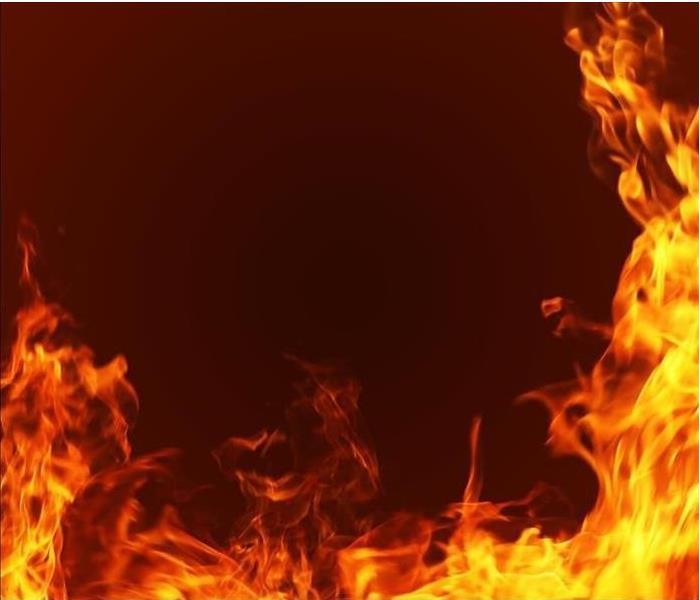 Smoke and Soot Damage Can Cause a Pervasive Odor in Your Washington DC Home.
Smoke and Soot Damage Can Cause a Pervasive Odor in Your Washington DC Home.
Smoke and soot is very invasive and can penetrate various cavities within your home, causing hidden damage and odor. Our smoke damage expertise and experience allows us to inspect and accurately assess the extent of the damage to develop a comprehensive plan of action.
Smoke and soot facts:
- Hot smoke migrates to cooler areas and upper levels of a structure.
- Smoke flows around plumbing systems, seeping through the holes used by pipes to go from floor to floor.
- The type of smoke may greatly affect the restoration process.
Different Types of Smoke
There are two different types of smoke–wet and dry. As a result, there are different types of soot residue after a fire. Before restoration begins, SERVPRO of will test the soot to determine which type of smoke damage occurred. The cleaning procedures will then be based on the information identified during pretesting. Here is some additional information:
Wet Smoke – Plastic and Rubber
- Low heat, smoldering, pungent odor, sticky, smeary. Smoke webs are more difficult to clean.
Dry Smoke – Paper and Wood
- Fast burning, high temperatures, heat rises therefore smoke rises.
Protein Fire Residue – Produced by evaporation of material rather than from a fire
- Virtually invisible, discolors paints and varnishes, extreme pungent odor.
Our Fire Damage Restoration Services
Since each smoke and fire damage situation is a little different, each one requires a unique solution tailored for the specific conditions. We have the equipment, expertise, and experience to restore your fire and smoke damage. We will also treat your family with empathy and respect and your property with care.
Have Questions about Fire, Smoke, or Soot Damage?
Call Us Today 202-737-8776
Is Your House Ready For Santa?
12/4/2017 (Permalink)
As we start December and get excited because the holidays are upon us, we must also keep in mind the importance of safety. Here are some tips to remember during the holidays.
Never use lighted candles near trees, boughs, curtains/drapes, or with any potentially flammable item.
Stand your tree away from fireplaces, radiators and other heat sources. Make sure the tree does not block foot traffic or doorways.
If you use an artificial tree, choose one that is tested and labeled as fire resistant. Artificial trees with built-in electrical systems should have the Underwriters Laboratory (UL) label.
If using a natural tree, make sure it is well watered to avoid dry branches from catching fire from the heat of light bulbs.
Turn off all lights on trees and decorations when you go to bed or leave the house. Unplug extension cords when not in use.
When putting up holiday decorations, always use the proper step stool or ladder to reach high places. Don’t stand on chairs, desks or other furniture.
Prepare your car for the winter by checking items such as the brakes, spark plugs, battery, and tires. Check your owner’s manual for the recommended interval for a tune-up.
Refer to the link below for more safety tips.
http://www.nsc.org/NSCDocuments/Holiday-Safety-Tips.pdf
FIRE SAFETY
12/4/2017 (Permalink)
Did you know that 3 out of 5 home fire deaths are due to non- working smoke alarms? Have you checked yours? It is as simple as looking on the back of the smoke alarm for the date of manufacture.
It is recommended that you try and change smoke alarms every 10 years if not sooner to avoid problems.
To find out more information on fire safety week visit the website of Fema:
https://www.usfa.fema.gov/
SERVPRO of Washington, DC is locally owned and operated—so we’re a part of this community too. We are also part of a national network of over 1,700 Franchises, which enables us to respond quicker with more resources. For major storms and disasters, we can call upon special Disaster Recovery Teams strategically located throughout the country.
Importance of Chimney Cleaning
8/30/2017 (Permalink)
Keeping a clean chimney can eliminate the possibility of chimney fires. The issue that can lead to fires is the creosote can build up when the firewood is not burned completely.
A smoky fire without enough oxygen emits lots of unburned tar vapors that can condense inside the flue and stick to it, possibly leading to a chimney fire. You can reduce creosote buildup in your fireplace by providing adequate combustion air, which will encourage a hot, clean-burning fire.
To check for creosote, shine the light near the top of the firebox, in the smoke chamber and around the damper. And check the flue, too, especially on exterior chimneys, where creosote builds faster than on interior chimneys because of lower outside temperatures
For more information check out:
https://www.familyhandyman.com/
Keep Your Kitchen Safe!
8/25/2017 (Permalink)
Recipe For Kitchen Safety:
· Stay in the kitchen when you are cooking on the stovetop so you can keep an eye on the food.
· Stay in the home when cooking food and check on it frequently.
· Watch children closely. It is a good rule of thumb to keep children three feet away from the cooking area.
· Clean cooking surfaces to prevent food and grease build-up.
· Keep curtains, towels and pot holders away from hot surfaces and store solvents and flammable cleaners away from heat sources. Never keep gasoline in the house.
· Turn pan handles inward to prevent food spills.
· Be sure electric cords from an electric knife, coffee maker, plate warmer or mixer are not dangling off the counter within easy reach of a child.
· Make sure your smoke alarms are working by testing them prior to beginning food preparation.
Tips and statistics reproduced from NFPA’s Web site, nfpa.org





 24/7 Emergency Service
24/7 Emergency Service







